Changelog
Never miss a new feature - subscribe to email updates
Trusted by the fastest-growing healthtech companies
Dec 16, 2025
You can now get a payer’s website URL using the Stedi Payer Network and the Payers API.
Stedi payer records now list the payer’s website URL, when provided.
View payer URLs in the Stedi Payer Network
Each payer now includes a Visit payer website link, when available in the payer’s record, in the Payer pane:
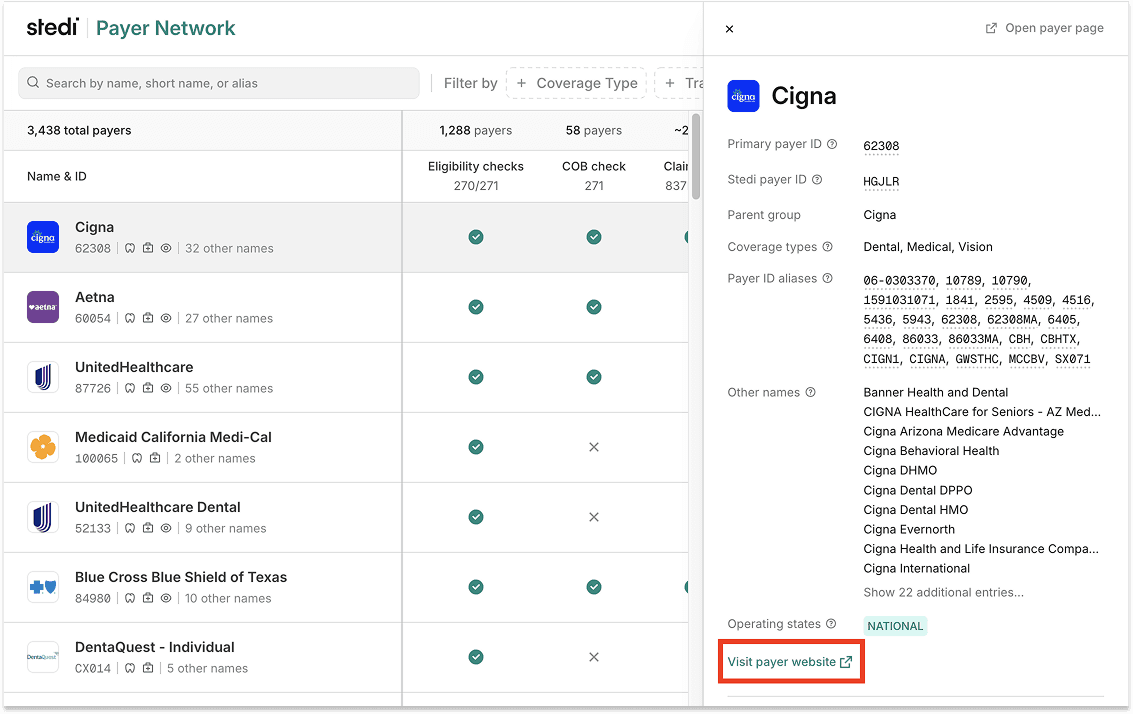
The Payer page also includes the link:
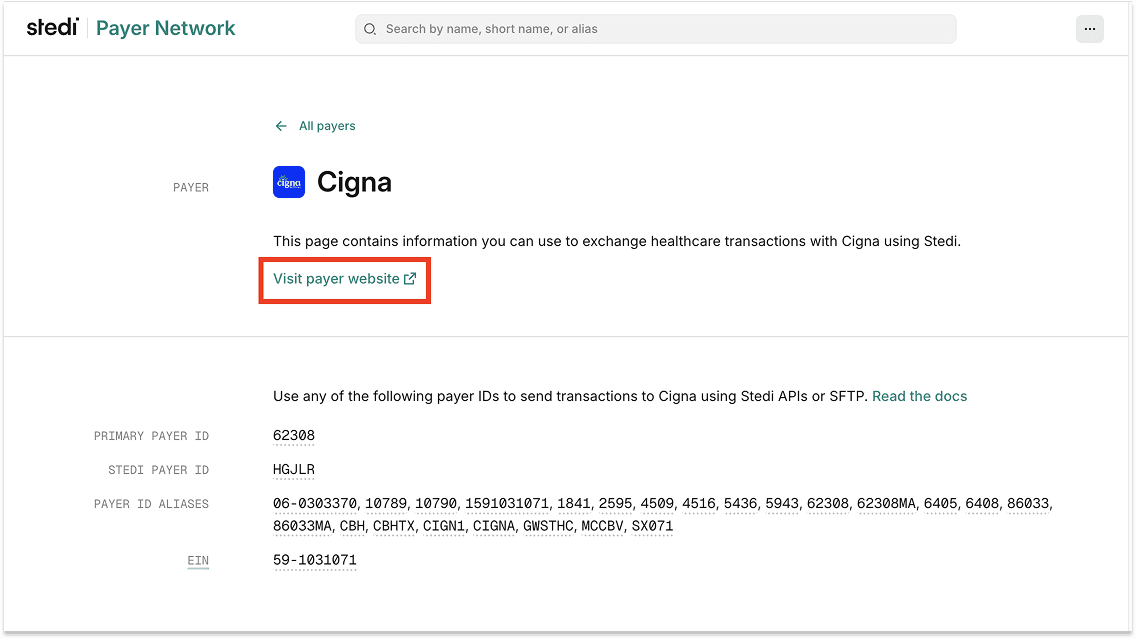
Retrieve payer URLs using the Payers API
All Payers API endpoints also now return the urls.website response property, if available, for payer records.
Dec 15, 2025
You can now correct and resubmit 837P professional claims using the Stedi portal’s CMS-1500 form.
Previously, if you submitted a claim using Stedi’s CMS-1500 form and later needed to fix it, you had two options:
Re-enter all the data into the form by hand.
Use the portal’s Edit and resubmit feature to change the raw X12.
Now, you can revise the previous claim directly in Stedi’s CMS-1500 form. Stedi loads the data from the original claim into the form for you.
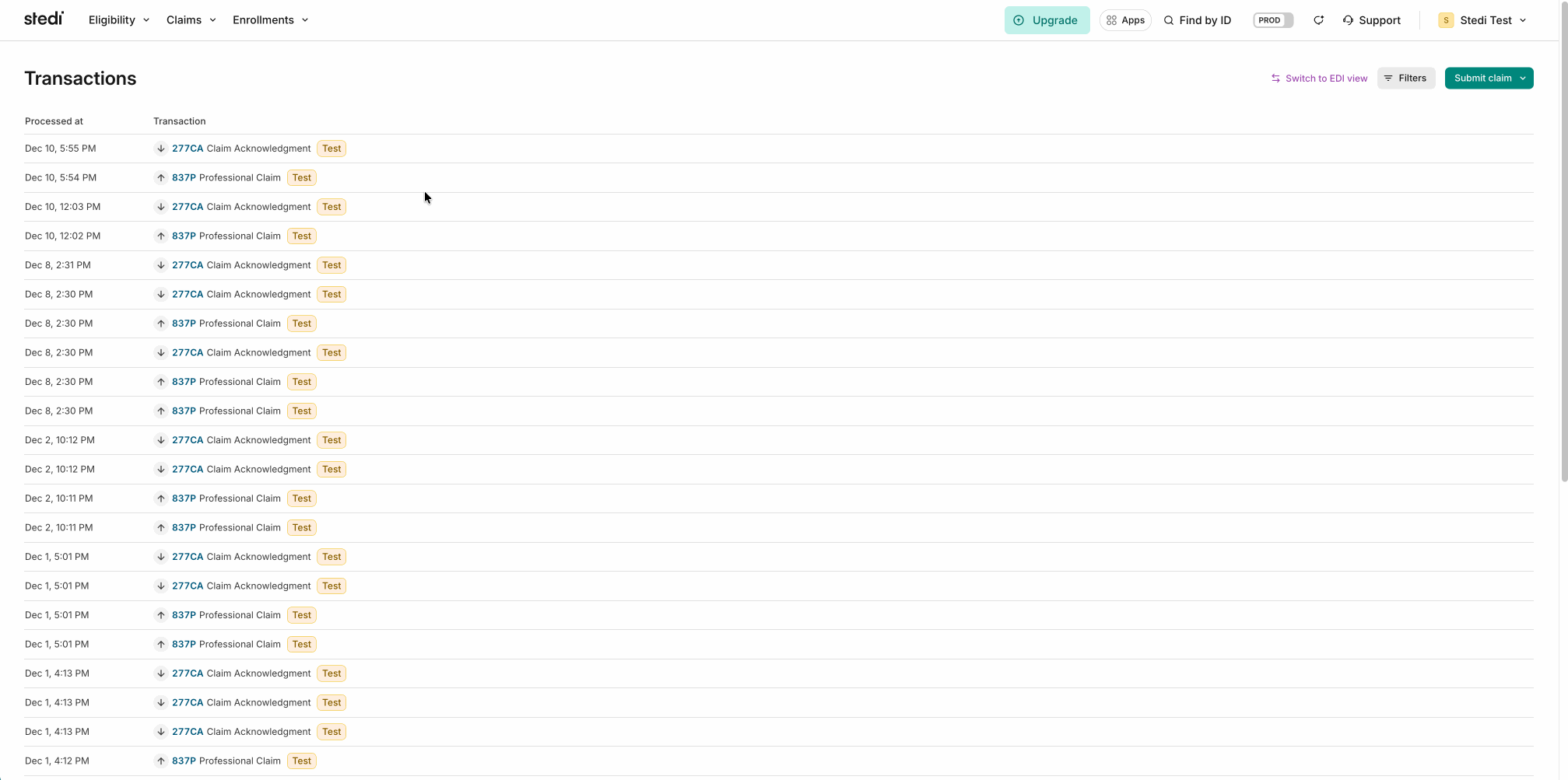
For more details, see our announcement blog.
Dec 15, 2025
You can now download unbranded ERA PDFs without a Stedi logo in the Stedi portal.
Stedi generates a PDF version of each Electronic Remittance Advice (ERA) you receive. Previously, all ERA PDFs included “Powered by Stedi” in the page footer. Now, you have the option to download ERA PDFs without this footer.
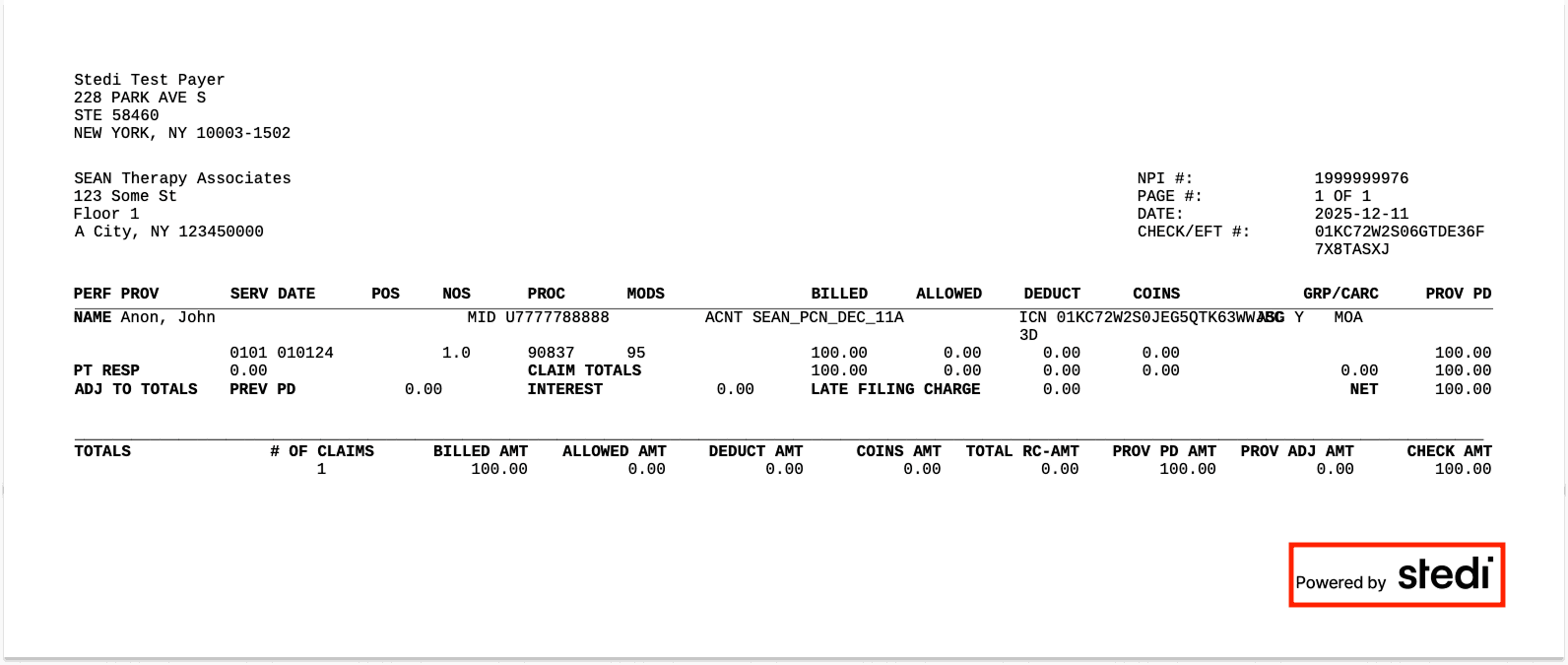
To download an unbranded ERA PDF:
Go to the Transactions page.
Click the ERA transaction you want to download.
On the Overview tab, click Fetch artifact. Then click … and select Download 835 ERA PDF without Stedi logo.
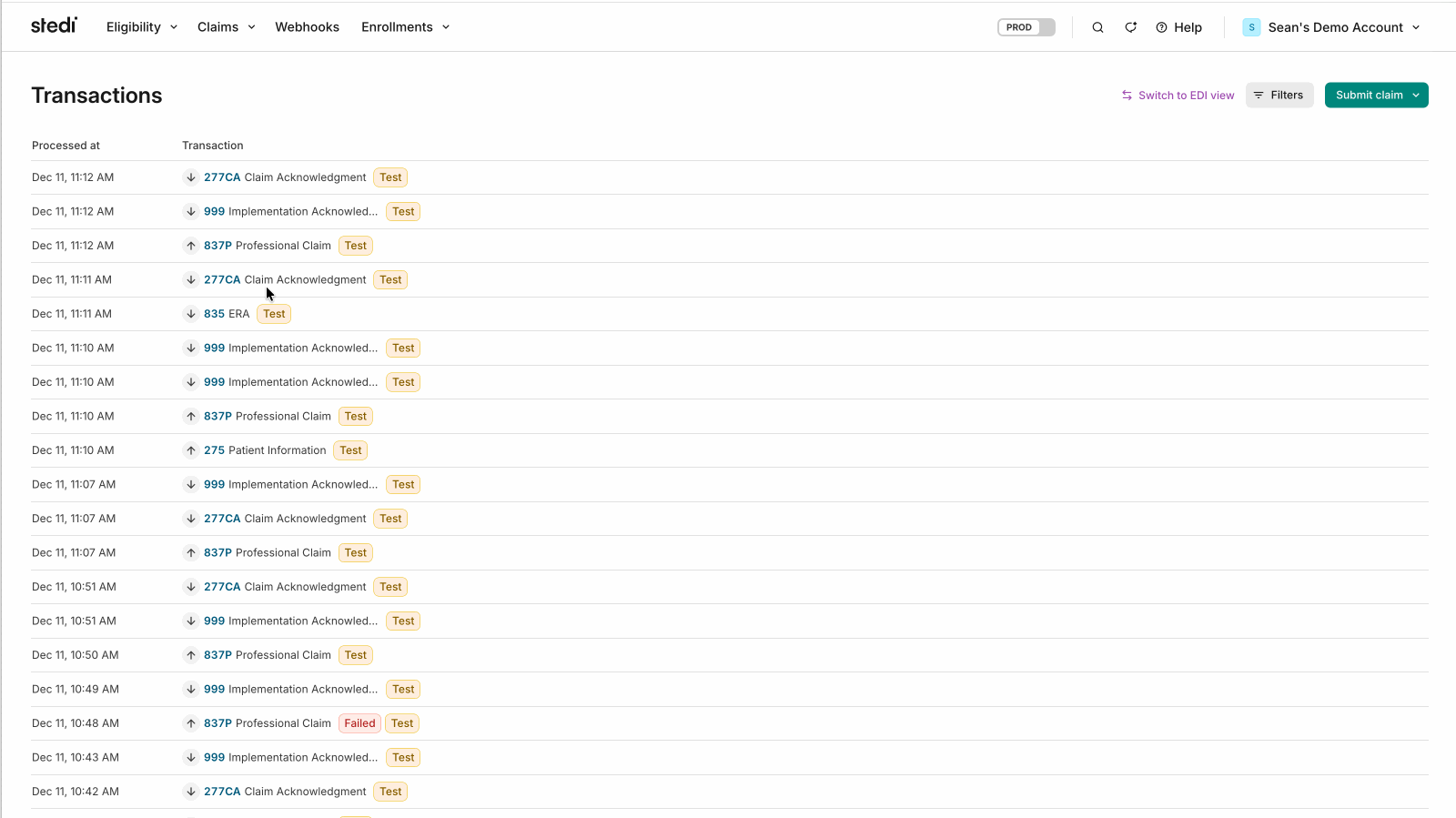
Dec 12, 2025
Stedi now rejects 837I institutional claims that are missing a required admission source code.
In an institutional claim, the admission source code tells you where the patient came from, such as the emergency room (ER), a doctor’s referral, or another facility.
Most institutional claims require this code. Without it, the payer can’t adjudicate the claim. The one exception is non-patient lab services, where no patient is present.
If the code is missing when required, the payer may reject the claim, which can cause payment delays.
This edit – the industry’s term for an automated validation rule – catches the issue before the claim reaches the payer.
When this edit applies
An institutional claim will fail this edit in the following cases:
JSON API
If you’re using Stedi’s JSON institutional claim submission API endpoint, the edit fails if:The
admissionSourceCodefield is missing or empty.
ANDThe
placeOfServiceCodefield does not contain14(Non-Patient Laboratory).
Raw X12
If you’re using raw X12, the edit fails if:
Rejection errors
If you submit a claim that fails the edit using Stedi’s institutional claim submission API endpoints, you’ll get back an error message in real time. If you’re using the JSON API endpoint, the response includes error details in the errors array:
If you submit a claim that fails the edit using SFTP, Stedi will reject the claim with a 277CA claim acknowledgment. The acknowledgment will contain a related claim status category code, claim status code, and error message. You can use the error message to correct and resubmit the claim.